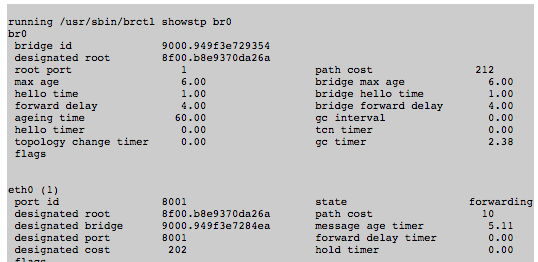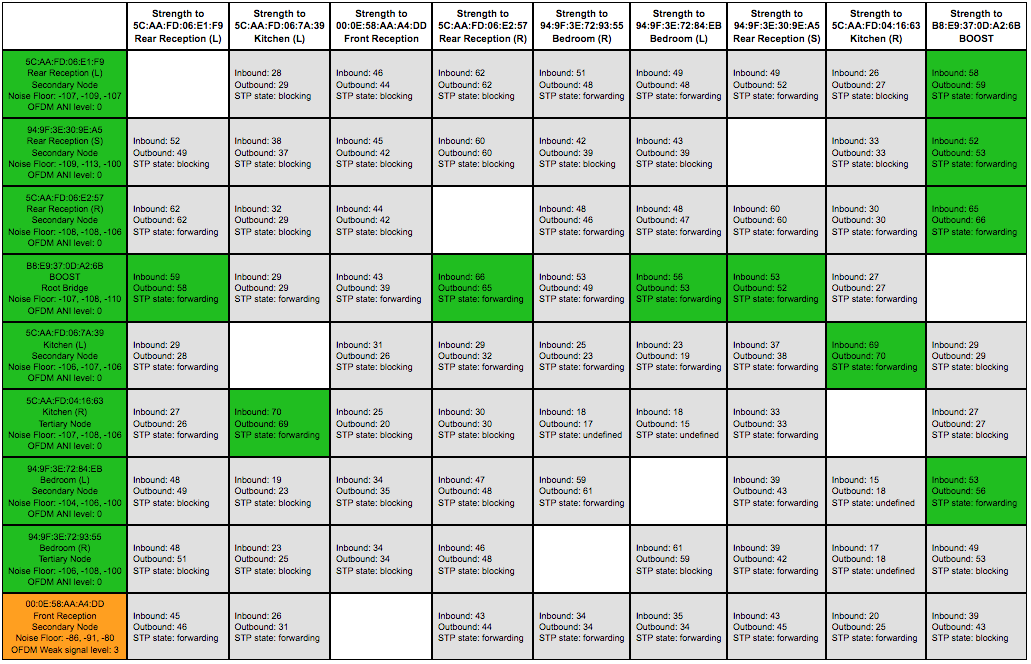I have a pair of PLAY:1s in a stereo pair. Both connect to SonosNet via a BOOST. What happens if I directly connect the two speakers with an Ethernet cable? Will one of the speakers receive its communication over the wire, while the other talks to the BOOST wirelessly?
Just curious, not trying to solve any problem I'm experiencing.
Answered
What happens if I string an Ethernet cable between my stereo-paired PLAY:1s?
Best answer by ratty
In many circumstances the wire between the pair will be used, with the player nearer to the BOOST making the wireless connection on behalf of both of them. For a simple pair (no grouping) this actually reduces wireless bandwidth demand by a factor of 3. Without the wire the stream would have to go BOOST->Left then Left->BOOST->Right.
I say 'in many circumstances' because there is a situation where the wire is ignored. This is where the STP root path costs for the two units in the pair differ by less than 10. The simplest way to check whether the wire is in use is to look at the Network Matrix at http://x.x.x.x:1400/support/review.
(The wire can be forced into use, in all cases, by disabling the radio on one of the pair. However this is an unsupported configuration.)
Note that in 'Standard Setup' the wire is useless as the Ethernet ports are disabled.
I say 'in many circumstances' because there is a situation where the wire is ignored. This is where the STP root path costs for the two units in the pair differ by less than 10. The simplest way to check whether the wire is in use is to look at the Network Matrix at http://x.x.x.x:1400/support/review.
(The wire can be forced into use, in all cases, by disabling the radio on one of the pair. However this is an unsupported configuration.)
Note that in 'Standard Setup' the wire is useless as the Ethernet ports are disabled.
This topic has been closed for further comments. You can use the search bar to find a similar topic, or create a new one by clicking Create Topic at the top of the page.
Enter your E-mail address. We'll send you an e-mail with instructions to reset your password.




